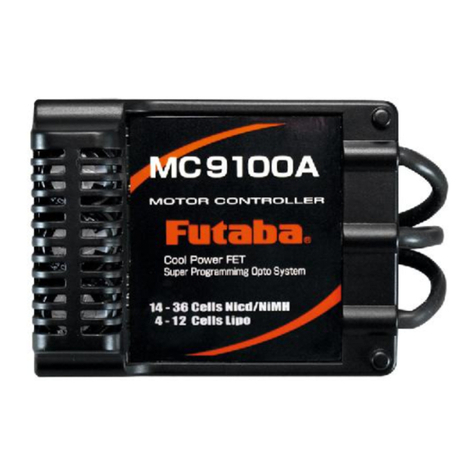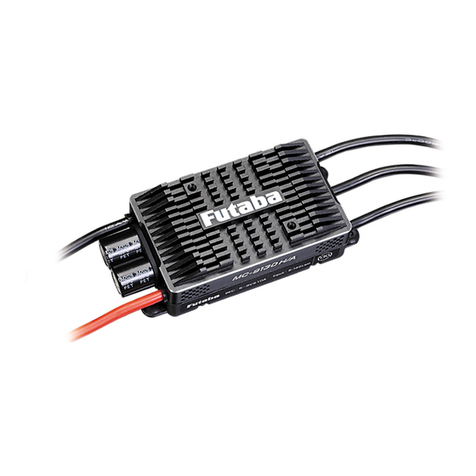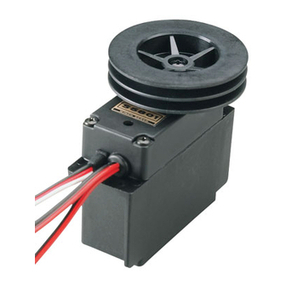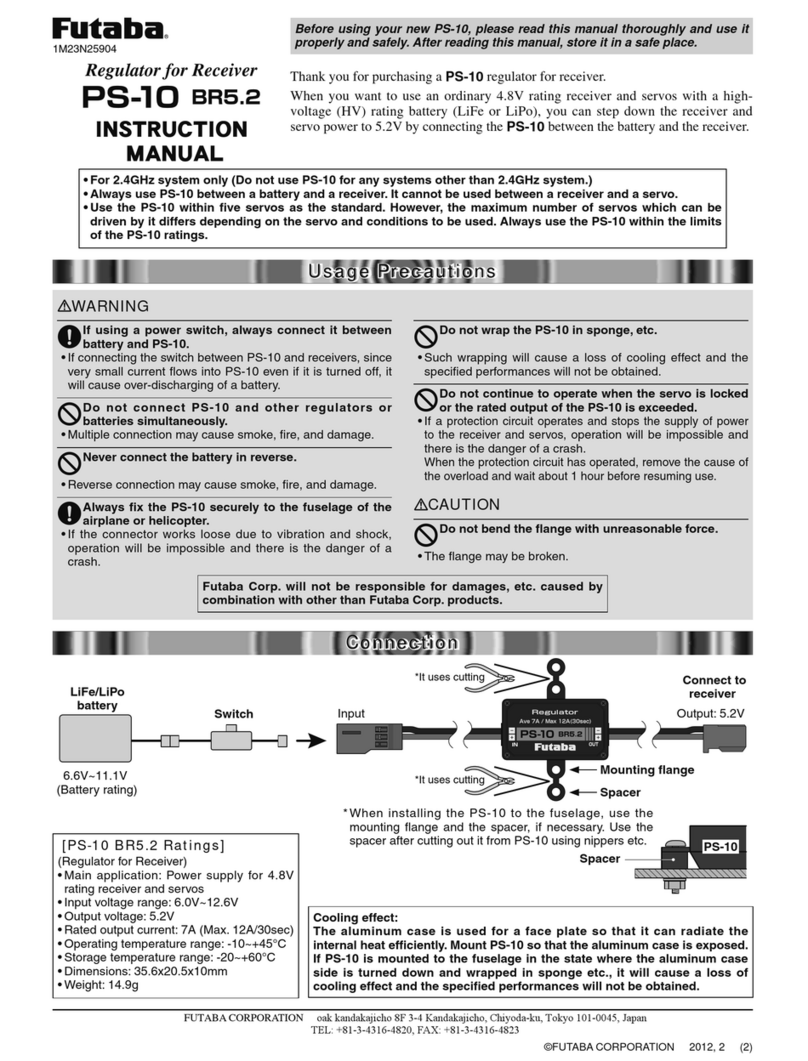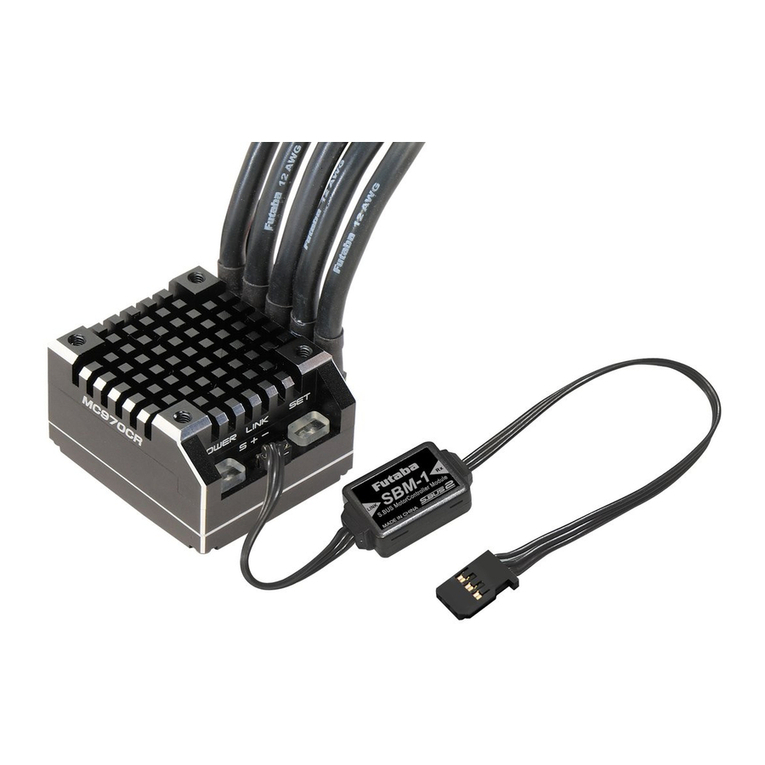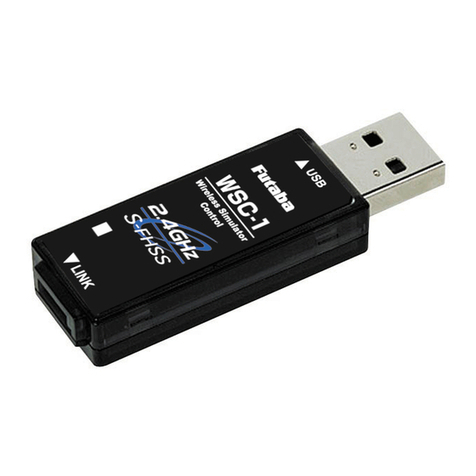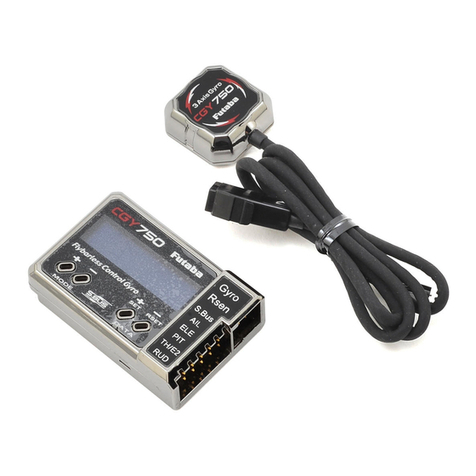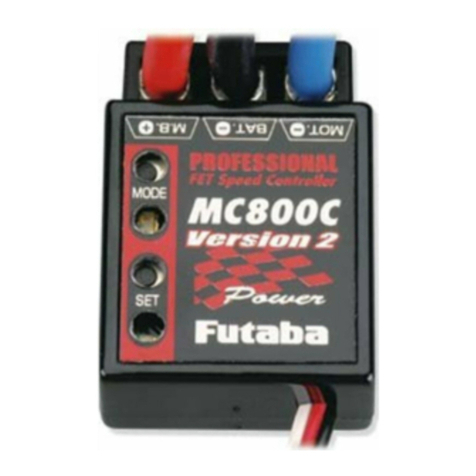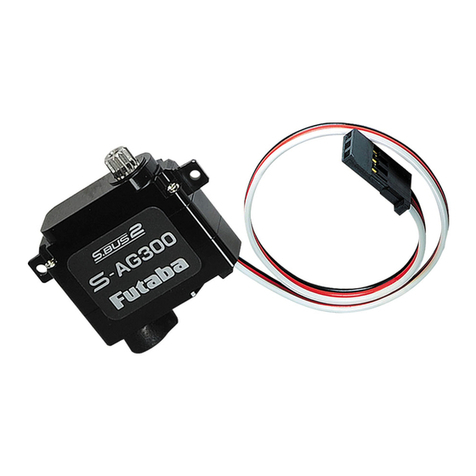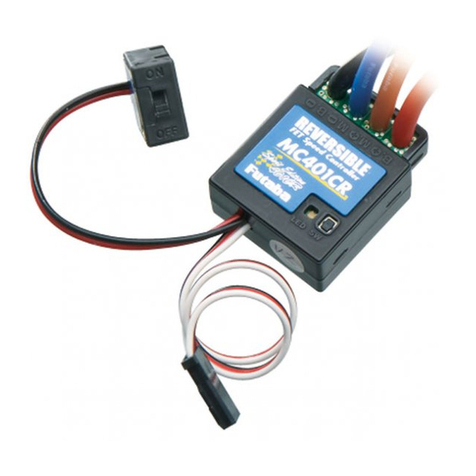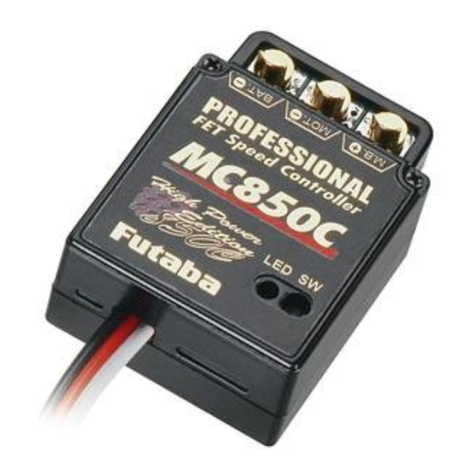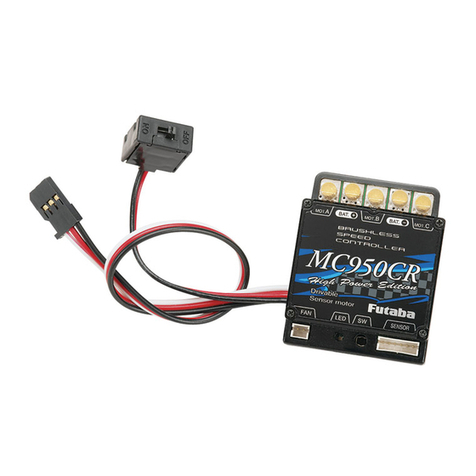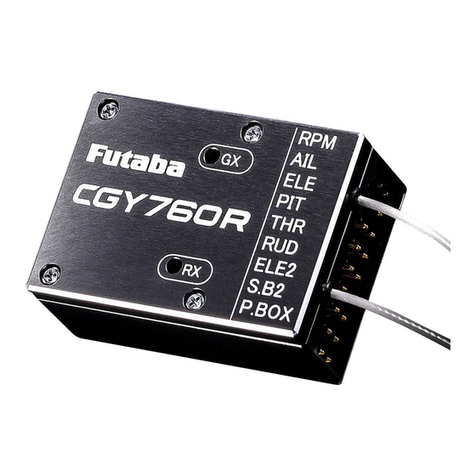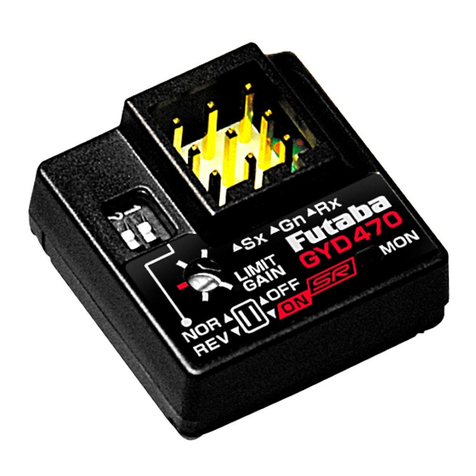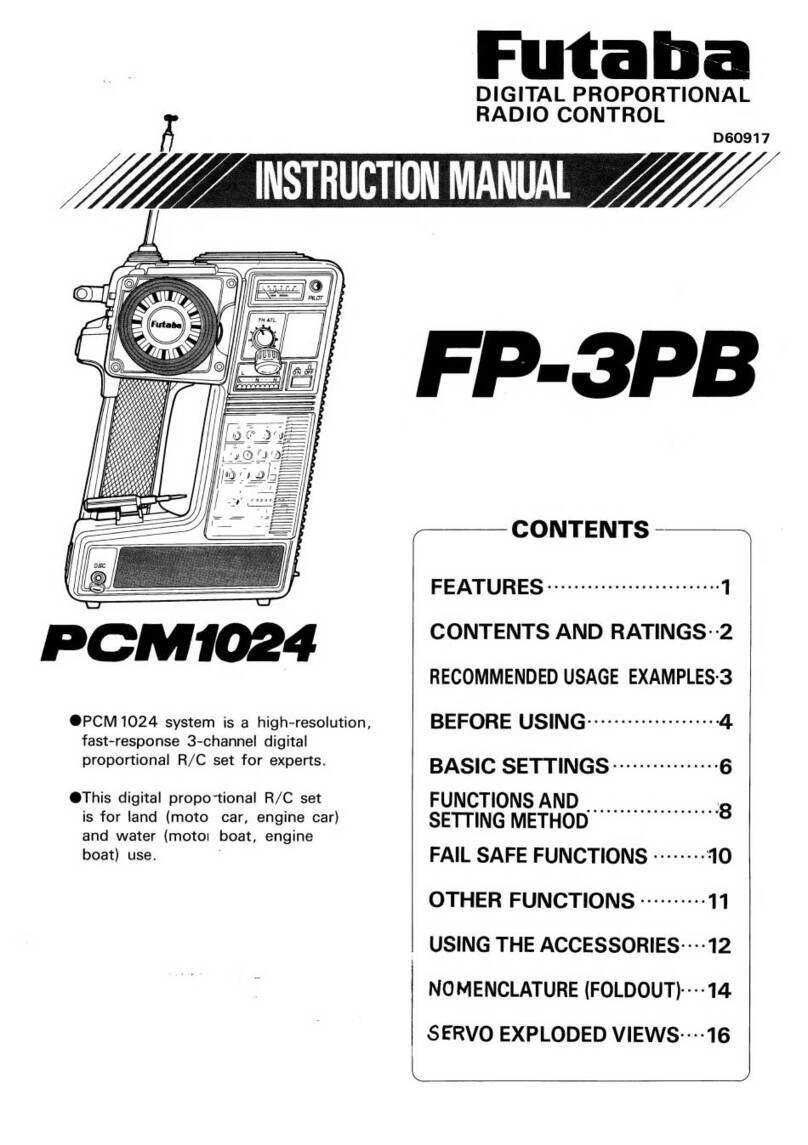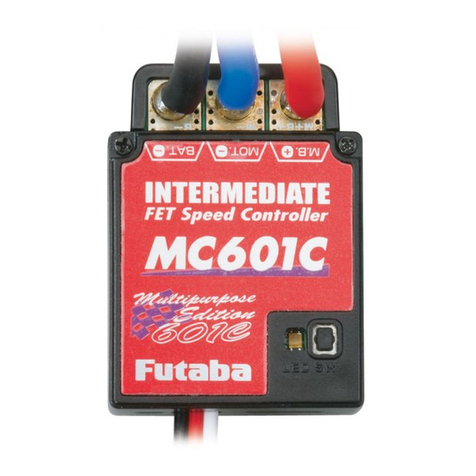
[[SSpecificationpecification]]
MC-980H/A
Function Auto recognition of cellPeak current80 ASize84.3 x 38.2 x 20.4 mmWeight 96.5 gCell LiPo 3~6 cells 11.1〜 22.2 VBEC5~8 V / 10 ABrushless motor MC-980H/AReceiverTo CH3To S.BUS2To free port To drive battery ThrottleConnectionsSBM-2Connect to display telemetry data on the transmitter. ♪B・B・B♪B・B・B♪B・B・B・B・B♪B・B・B・B・B・B♪B・B・B・B・B・B3cells battery3cells battery5cells battery6cells battery6cells batteryReverse line TSBM-2 LED: Flashes red and green when telemetry is communicating normally. NOTE: Always read this manual before using the MC-980H/A ESC.
Before using the MC-980H/A
* Improper handling of the LiPo battery is extremely dangerous. Use
the battery in accordance with the instruction manual supplied
with it.
* Some commercial motors may not match advance timing
adjustment, etc. of the MC-980H/A.
* Always solder the MC-980H/A battery connection cord to a
connector matched to the battery used. Do not use the ESC in a
temporarily connected state.
Mounting precautions
WARNING
Always use the MC-980H/
A within the operating
conditions range given in the
specifications.
Be sure that the battery
polarity is correct.
Reverse connection will cause
sparking and immediate destruction
or burning inside the ESC. Never short circuit even
places where there is no
ba tt er y, mo to r, re ce iv er, o r
connector.
Short circuits will cause sparking
and i mmed iate d estr uct ion or
burning inside the ESC.
Mount the ESC so that the soldered
par t of the cord does not touch
conductive parts.
Operating precautions
WARNING
Be careful that no part of
your body touches par ts
that rotate during operation.
Unexpected rotation may cause
serious injury.
Depending on the receiver, the
motor may rotate the instant the
power is turned on.
Do not fly in rainy weather.
If wate r d rops en ter the ES C,
control will be lost due to erroneous
o p e r a t i o n a n d i s e x t r e m e l y
dan gero us. I t may als o c ause
an accident. If the ESC operates
erroneously due to the entry of
water, repair and inspect it.
A l w a y s t u r n t h e p o w e r
switches ON and OFF in the
following order:
ON: Set the throttle stick to the stop
position and turn on the power
switches in transmitter receiver
order.
OFF: Set the throttle stick to the
stop position and turn off the power
switches in receiver transmitter
order.
I f p e r f o r m e d i n r ev e r s e , t h e
propeller may rotate unexpectedly
and is extremely dangerous.
Always remove the battery
when not using the ESC.
I f t h e s w i t c h i s t u r n e d o n
erroneously, the propeller will rotate
unexpectedly or a fire may start.
B e f o r e f l y i n g , c h e c k
operation of the ESC and all
the control surfaces.
When not set properly and when
a differ ent m ode l is s ele cte d,
control will be lost and is extremely
dangerous.
CAUTION
Do not touch the motor and
ESC immediately after flight.
It will cause a burn.
Power is supplied to the Receiver. No receiver battery is required. There is no polarity. If the direction of rotation is opposite, replace any two of the three. Red is positive and black is negative.It is dangerous to make a mistake in polarity. Connect only when using brake type reverse in airplane mode. Connect to the SW channel of the reverse switch.
If the receiver power is insufficient when the motor starts, connect the attached capacitor to the receiver to free port.
Precautions about Battery F/S Turn on the transmitter and move the throttle stick to the high position. Turn on the transmitter, move the Throttle stick to the low position, and turn on the throttle cut switch. If you are in governor mode on a helicopter or use the brakes on an airplane, set the throttle cut switch on the transmitter. Be sure to connect the drive battery in the throttle cut state. Release the throttle cut at the start. After landing, stop the motor with a throttle cut and then remove the battery. Connect a battery to the ESC, the motor will sound " ♪1-2-3" to indicate the ESC is powered on normally. Connect a battery to the ESC, the motor will sound " ♪ 1-2-3" to indicate the ESC is powered on normally. Turn on throttle cut Throttle Low5 seconds later, the motor will beep two short beeps to indicate the maximum throttle end point is accepted.The motor will beep "Number" beeps to indicate the number of Lipo cells you have plugged in.Long beep sounds to indicate that the ESC is ready. Move the throttle stick to the bottom position within 3 seconds after you hear those two beeps, the minimum throttle position will be accepted 1 second later.The motor will beep "Number" beeps to indicate the number of Lipo cells you have plugged in.The motor will beep a long beep to indicate the calibration is complete.Connect the battery Connect the battery ♪1-2-3Beep♪1-2-3BeepThrottle to low ♪BBLong beepCalibration is complete♪BBLong beepReady to start !Before calibration, set the throttle curve of the transmitter to a straight line of -100% to 100%, and set all throttle-related mixing to INH. Make sure that the throttle amount corresponding to the maximum throttle endpoint and the minimum throttle endpoint of the transmitter is 100% and 0%, respectively. Start-up procedure Alarm 1.Power-on Abnormal Voltage Protection:The ESC will measure the input voltage when it’s connected to a battery or power supply. If the input voltage is not within the regulated range, it will take the voltage as an abnormal voltage and then activate the protection, flash Red LED and beep a series of beeps.2.Throttle Signal Loss Protection:When the ESC detects loss of signal for over 0.25 second, it will cut off the output immediately to avoid an even greater loss which may be caused by the continuous high-speed rotation of propeller. The ESC will resume the corresponding output after normal signals are received.3.Throttle stick is not at the bottom position:The motor will beep “B-B-B-B-B-” when the throttle stick is not moved to the bottom position.4.Throttle range is too narrow:The motor will beep “B-B-B-B-B-” when the throttle range you set is too narrow (when designing this ESC, it requires that the entire throttle range you set cannot be less than 50% of the whole throttle range available on the transmitter.) The warning tone indicates the throttle range you set is void and you need to set it again. Flight Mode
Heli ElfGov : ELF Governor
Recommended mode for using heli governor
Use batteries with dierent
numbers of cells Throttle curve needs to be set RPM standardization starts every time RPM standardization only for the first time Heli StoGov : Store GovernorFixed-wing : Air planeExt.Gov : Linear throttle (No Governor )♪BB ♪BBTwo beepsThe BEC voltage (voltage supplied to the receiver) of this ESC is output at about 5.0 V for a few seconds at startup, and then the BEC voltage set by the user is output. Therefore, if the battery fail-safe voltage of the FASSTest and T-FHSS Air receiver is set to 5.0 V or higher, the Battery F/S function works even though the battery is sufficient.* The battery fail-safe voltage of FASST and S-FHSS receivers is fixed at 3.8 V, so there is no problem.When using with FASSTest or T-FHSS Air, make one of the following set-tings. 1. Reduce the battery fail-safe voltage to 4.8 V or less.2. Turn off the battery fail-safe setting.* As a method of monitoring the battery voltage, check the voltage of the receiver with a telemetry alarm. Reverse the throttle channel (CH3) of the Futaba transmitter. Designed for
450-500 Class
helicopter Brushless Electronic Speed controller forhelicopter/airplaneMC-980H/AInstruction manualhe attached split cable is notnormally used. Used when there isan update of SBM-2.ESC/Transmitter CalibrationPerform this calibration when using for the first time or when changingtransmitter. Let the ESC read the operating range of throttle.Mount the MC-980H/A to the
fuselage where there is an
ample flow of cool air.
Do not wrap the MC-980H/A
body in aluminum foil.
Such wrapping will cause a loss
of cooling effect and the specified
performances will not be obtained.
Mo unt t he r ec ei ve r an d
receiver antenna away from
the MC- 98 0H /A, moto r co rd,
power cord, drive battery and
other parts through which a large
current flows.
If t he r ece ive r is overwhelmed
by noise, control will be lost and
can be extremely dangerous.
I n s e r t t h e connectors
fully.
If a connector works loose due to
vibration, control will be lost and is
extremely dangerous.
Mount the MC-980H/A where
it will not be exposed to oil,
grease, and water.
Install the motor securely.
Also secure all the cables.
CAUTION
Do n ot d isa sse mble t he
ESC. Do not open the case
of the product.
Opening the case will damage
the interior. In addition, repair will
become impossible.
If the t empera turebecomes high, attachthe attached fan withtwo screws as shown inthe figure after the ESChas cooled down forbettercooling performance in futureflights.
When using SBM-2, connect to a free port of Receiver


